Candida vulvovaginitis: Difference between revisions
| Line 31: | Line 31: | ||
==[[Candidiasis pathophysiology|Pathophysiology]]== | ==[[Candidiasis pathophysiology|Pathophysiology]]== | ||
== | ==[[Candidiasis laboratory tests|Lab Tests]]== | ||
== Treatment == | == Treatment == | ||
Revision as of 20:52, 10 January 2012
|
Candidiasis Main page |
For patient information click here
| Candidiasis | |
 | |
|---|---|
| Agar plate culture of Candida albicans | |
| ICD-10 | B37 |
| ICD-9 | 112 |
| DiseasesDB | 1929 |
| MedlinePlus | 001511 |
| MeSH | D002177 |
Editor-In-Chief: C. Michael Gibson, M.S., M.D. [1]
Overview
Historical perspective
Causes of Candidiasis
History & Symptoms
Physical Examination
Pathophysiology
Lab Tests
Treatment
It is important to consider that Candida species are frequently part of the human body's normal oral and intestinal flora. Candidiasis is occasionally misdiagnosed by medical personnel as bacterial in nature, and treated with antibiotics against bacteria. This can lead to eliminating the yeast's natural competitors for resources, and increase the severity of the condition.
In clinical settings, candidiasis is commonly treated with antimycotics - the antifungal drugs commonly used to treat candidiasis are topical clotrimazole, topical nystatin, fluconazole, and topical ketoconazole. In severe infections (generally in hospitalized patients), amphotericin B, caspofungin, or voriconazole may be used. Local treatment may include vaginal suppositories or medicated douches. Gentian violet can be used for breastfeeding thrush, but pediatrician recommends using it sparingly, since in large quantities it can cause mouth and throat ulcerations in nursing babies, and has been linked to mouth cancer in humans and to cancer in the digestive tract of other animals. [1]
One of the most potent nondrug or natural yeast-fighting substances is caprylic acid, a medium-chain fatty acid derived from coconut oil. Caprylic acid in capsule form is commonly sold as a dietary supplement in health food stores. It is very effective against Candida and other forms of fungi. It is even effective mixed with a little coconut oil or vitamin E oil as a topical application for fungal skin infections. Some cases of fungal infections that have lasted for months clear up in a matter of days using caprylic acid and a little coconut oil. It works just as effectively inside the body, killing fungi without the least bit of harm.
Polynesian women who eat their traditional coconut-based diet rarely, if ever, get yeast infections. Only in more temperate climates where processed vegetable oils are the main source of dietary fat are yeast infections, skin fungus, acne, and other skin infections big problems. Lauric acid, found in coconut oil, kills lipid-coated bacteria but does not appear to harm the friendly intestinal bacteria. Medium-Chain Fatty Acids (MCFA)s also have antifungal properties, so not only will they kill disease-causing bacteria and leave good bacteria alone but also they will kill Candida and other fungi in the intestinal tract, further supporting a healthy intestinal environment. Eating coconut oil on a regular basis, as the Polynesians do, helps to keep Candida and other harmful microorganisms at bay.
Some home remedies for candidiasis include the consumption or direct application of yogurt (which contains lactobacillus), probiotics, acidophilus tablets or salves, Pau d'arco tea, and even lightly crushed cloves of garlic, which yield allicin, an antifungal agent. Boric acid has also been used to treat yeast infections (by inserting gelcaps filled with boric acid powder into the vagina at bedtime for three to four consecutive nights). Eating a diet consisting primarily of green, fresh, raw vegetables also may give relief. Other alternative treatments consist in consuming a fermented beverage called Kefir.
While home remedies may offer relief in minor cases of infection (although a peer-reviewed study in Australia found yogurt ineffective as treatment for Candida albicans), seeking medical attention may be necessary, especially if the extent of the infection cannot be judged accurately by the patient. For instance, oral thrush is visible only at the upper digestive tract, but it may be that the lower digestive tract is likewise colonized by Candida species.
Treating candidiasis solely with medication may not give desired results, and other underlying causes require consideration. As an example, oral candidiasis is often linked to the use of inhaled corticosteroids in asthma medication. Patients on long-term inhaled corticosteroids should rinse their mouths after each dose of steroids to counteract this effect. Oral candidiasis can also be the sign of a more serious condition, such as HIV infection, or other immunodeficiency diseases. Following the health tips at vulvovaginal health can help prevent vaginal candidiasis.
Babies with diaper rash should have their diaper areas kept clean, dry, and exposed to air as much as possible. Sugars assist the overgrowth of yeast, possibly explaining the increased prevalence of yeast infections in patients with diabetes mellitus, as noted above. As many Candida spp. reside in the digestive tract, dietary changes may be effective for preventing or during a Candida infection. Due to its requirement for readily fermentable carbon sources, such as mono- or dimeric sugars (e.g., sucrose, glucose, lactose) and starch, avoiding foods that contain these nutrients in high abundance may help to prevent excessive Candida growth. Breast milk is a suitable growth substrate for yeasts, and both nursing mother and baby need to be treated (even if both are not symptomatic) to prevent thrush from being passed between mother and child. [2]
Case Example: Renal Candidiasis
Clinical Summary
A 73-year-old black male was in good health until about three months before his death when he noticed enlarged lymph nodes first in both inguinal regions and later elsewhere. Antileukemic therapy was begun. About two weeks prior to his death the patient presented to the emergency room with uncontrollable epistaxis. On physical examination, the liver was palpable but the spleen was not. The white blood count was below normal and consisted mainly of lymphocytes with many atypical cells. The patient's bone marrow was also found to be heavily loaded with lymphocytes. Platelets were extremely low and remained so despite platelet transfusions. Subsequently, the patient developed pneumonia which progressed until death. Antemortem cultures yielded Candida tropicalis and Pseudomonas aeruginosa.
Autopsy Findings
At autopsy, there was evidence of disseminated candidiasis.
Histopathological Findings
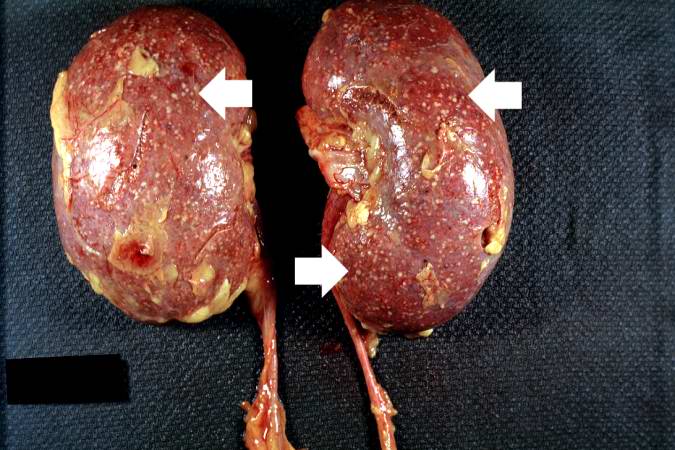
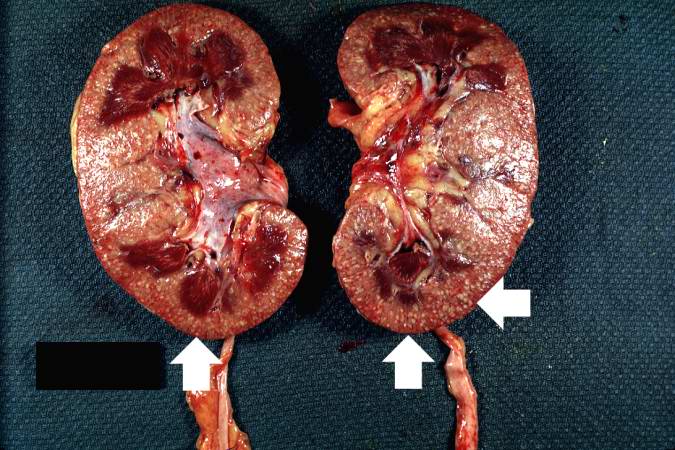
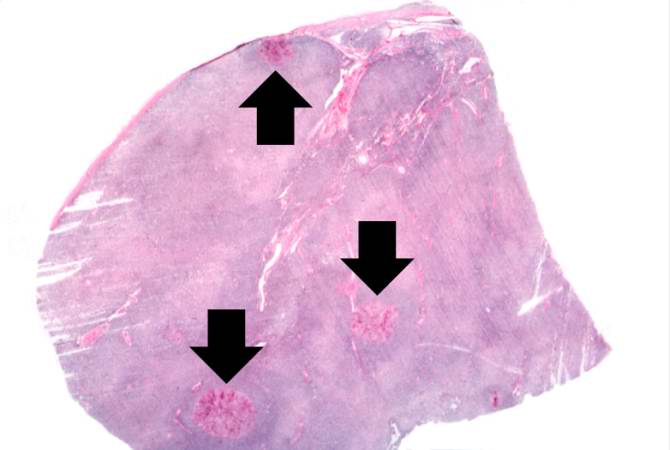
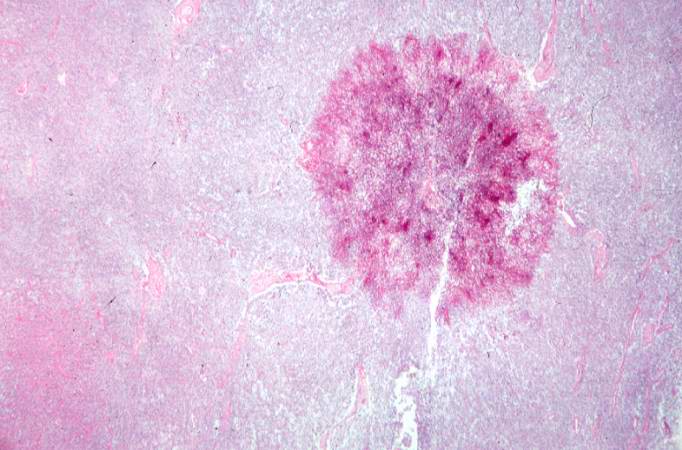
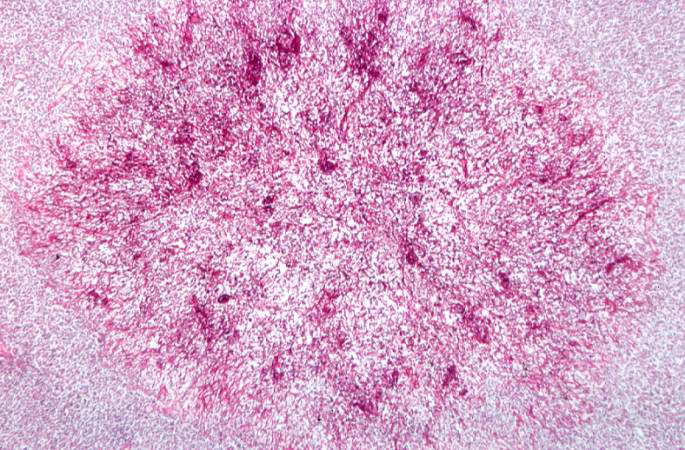
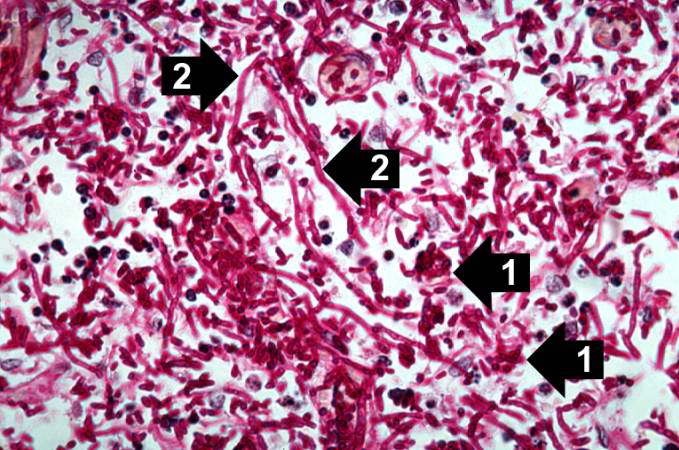


References
External links
- National Institute of Allergies and Infections (June 27, 2007). "Vaginitis". Retrieved 2008-02-21. - fact sheet on vaginitis/vaginal infections
- Oral Thrush Mayo Clinic
- DermAtlas candidiasis images
- InteliHealth page on candidiasis Presented by InteliHealth reviewed by Harvard Medical School
- Links to pictures of Yeast Infection (Hardin MD/Univ of Iowa)
- "Yeast Infections". VaginaPagina. - info on treatments
See Also